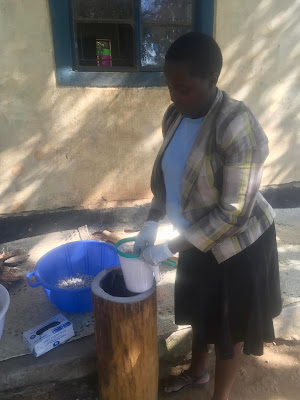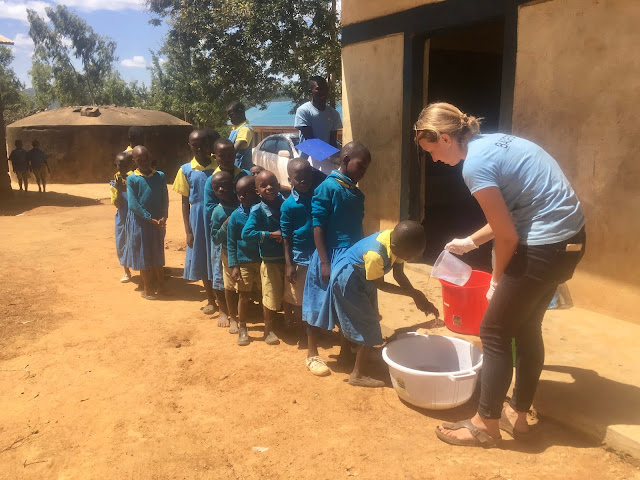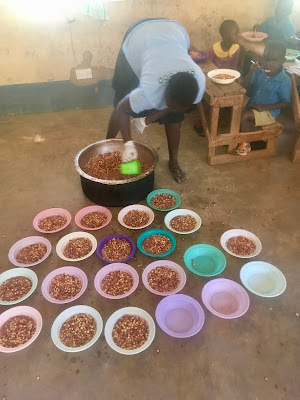Baofood
Living in a developing country where NGO's and research is in abundance I get some really nice opportunities to learn and experience things I never would have thought. Like how to conduct an experiment on the nutrition of the baobab fruit with kids.
Esther and Maike, 2 wonderful ladies from Germany, have moved into Kitui for 3 months in order to work on their PhD and masters thesis projects on the nutritional benefits of the baobab fruit.
They are conducting the performance through using the powder from the baobab fruit to make a delicious drink for the children to have every day during lunch.
To draw a conclusion, they are doing blood sampling before and after the 3 month trial, are documenting everything the kids eat, and are comparing the same amount of kids taking the baobab to kids not consuming baobab.
They started early May and will conclude at the end of July.
While I cannot pretend to know much about the whole project, I'll share what I did learn during my one day field trip with Esther.
First, the baobab tree. Also known as the "Tree of Life". The trunk is up to 80% water, and one trunk can hold has much as 4,500 liters. The bark and flesh is fibrous to make clothes and ropes, and other products are soap, glue and rubber. But more importantly, the fruit of the tree is extremely nutritious. Native Africans have called it the "Monkey Bread Tree". The pulp of the fruit is high in calcium, iron, potassium and vitamin C.
The fruit is sort of oval shaped, covered in a fine fur and has a hard outer shell.
For this project, to prevent the fur from entering the powder, it is removed leaving the fruit black instead of green looking. The fruit is cracked open using a machete and the pulp covered seeds are removed.



The pulp is removed from the seed using this specially made mortar. Esther and I gave it a go, but were quickly replaced by the more experienced.
After a lengthly time of pounding the seeds and getting a good arm workout the seeds and powder are sieved through by Grace. The powder is then taken to the next 'kitchen'.
Every day the powder has to be made fresh and kept and in dark container in order to save as much nutrients as possible. The longer it sits and the more sunlight it is exposed to, the more the vitamin C decreases.
This is the preparation area in the classroom. The Pink cups do not get the baobab, while the green cups get the baobab powder in their drink.
Below is the directions are recipe for the 2 drinks.
 The juice in the pink cup, with no baobab, consists of water, corn starch, honey and mango flavouring.
The juice in the pink cup, with no baobab, consists of water, corn starch, honey and mango flavouring.The baobab juice includes water, baobab powder, honey and mango flavouring.
The juices must be blended just before serving to ensure proper consistency throughout. Note the "Baofood" shirts Grace and Peter are rockin!

The classroom is empty and waiting the kids!
But first, they need to wash their hands...
Lunch time and the githeri and juice are served!! Githeri is the most common meal served at school. Typically it consists of cooked beans and corn, but for this experiment, some soy was added for extra iron.
The kids LOVE the juice!! During the weekend, one kids even jumped off a moving motorcycle cause he was afraid he wouldn't get his juice!! He got his juice, but unfortunately he did suffer some physical injuries...
After the kids have finished we washed the dishes outside, and started brushing the fine hairs off of tomorrows baobab fruit. They use about 7kgs of fruit a day.

Thanks to Kakumuti Primary School for being great sports and helping!
















Comments
Post a Comment